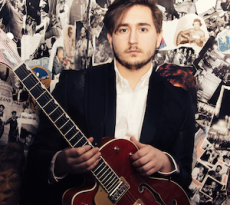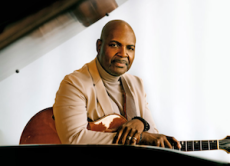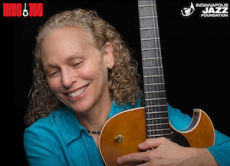
AARON LESSARD GROUP
More Posts: adventure,album,club,festival,genius,guitar,jazz,museum,music,preserving,restaurant,travel

The Jazz Voyager
The Jazz Voyager is off to Canada for a first time experience at Frankie’s Jazz Club in British Columbia. Located in Vancouver at 755 Beatty Street V6B 2M4. This week I’m going to witness three young up and coming musicians, guitarist Alvin Brendan, keyboardist Benjamin Millman, and drummer Trent Otter.
A home to live jazz and blues, Frankie’s features local, national and international world class musicians. They offer an evening of casual intimacy with a selection of spirits and wine coupled with an Italian menu to enjoy music to.
Frankie’s Jazz Club phone number is +1 604-688-6368. For more information on showtimes and tickets visit https://www.frankiesjazzclub.ca/
More Posts: adventure,album,club,drums,festival,genius,guitar,jazz,keys,museum,music,preserving,restaurant,travel

BOBBY BROOM
Harlem born, New York City raised, Bobby Broom has been heralded as “one of the most musical guitarists of our time” by jazz historian and author, Ted Gioia. Playing Carnegie Hall with Sonny Rollins and Donald Byrd at age 16, Broom recorded his debut as a leader, “Clean Sweep,” for GRP Records at age 20. He’s played and /or recorded with Kenny Burrell, Hugh Masakela, Art Blakey’s Jazz Messengers, Stanley Turrentine, Dave Grusin, Charles Earland, Miles Davis, Kenny Garrett and Dr. John, among others. Broom has been recognized as one of the top guitarists by Down Beat magazine’s annual Reader’s Poll in 2015 & 2020, as well as their Critics Poll for four years, from 2012-2014 and again in 2017. His latest quartet recording, “Keyed Up,” released in late 2022, is an homage to some of the great pianist/composers in jazz.
More Posts: adventure,album,club,festival,genius,guitar,jazz,museum,music,preserving,restaurant,travel

MIMI FOX ~ WES AT 100
Presented by The Indianapolis Jazz Foundation and in celebration of Wes Montgomery’s 100th birthday
There is no better way to celebrate great jazz than with the Indianapolis Jazz Collective featuring Rob Dixon, Steve Allee, Greg Artry + Nick Tucker with featured guest artist guitarist Mimi Fox. Join The Jazz Kitchen and these supreme, creative musicians for a night that explores what jazz has to offer through standards, jams and improvisation.
More Posts: adventure,album,club,festival,genius,guitar,jazz,museum,music,preserving,restaurant,travel

CAROL RIDDICK & GERALD VEASLEY
The groundbreaking collaboration between Gerald Veasley and Carol Riddick pairs two legends of jazz and soul music to celebrate an iconic artist. The act, consisting of vocals and three instrumentalists, has performed in many festivals, jazz clubs and churches to a sold-out crowds pays homage to “The High Priestess of Soul”, singer, song writer and activist, Nina Simone.
Simone was one of the most extraordinary artists of the twentieth century; an icon of American music. She was the consummate musical storyteller, a griot as she would come to learn, who used her remarkable talent to create a legacy of liberation, empowerment, passion, and love through a magnificent body of works. She earned the moniker “High Priestess of Soul” for she could weave a spell so seductive and hypnotic that the listener lost track of time and space as they became absorbed in the moment.
All Shows ~ SOLD OUT!
More Posts: adventure,album,club,festival,genius,guitar,jazz,museum,music,preserving,restaurant,travel,vocal

